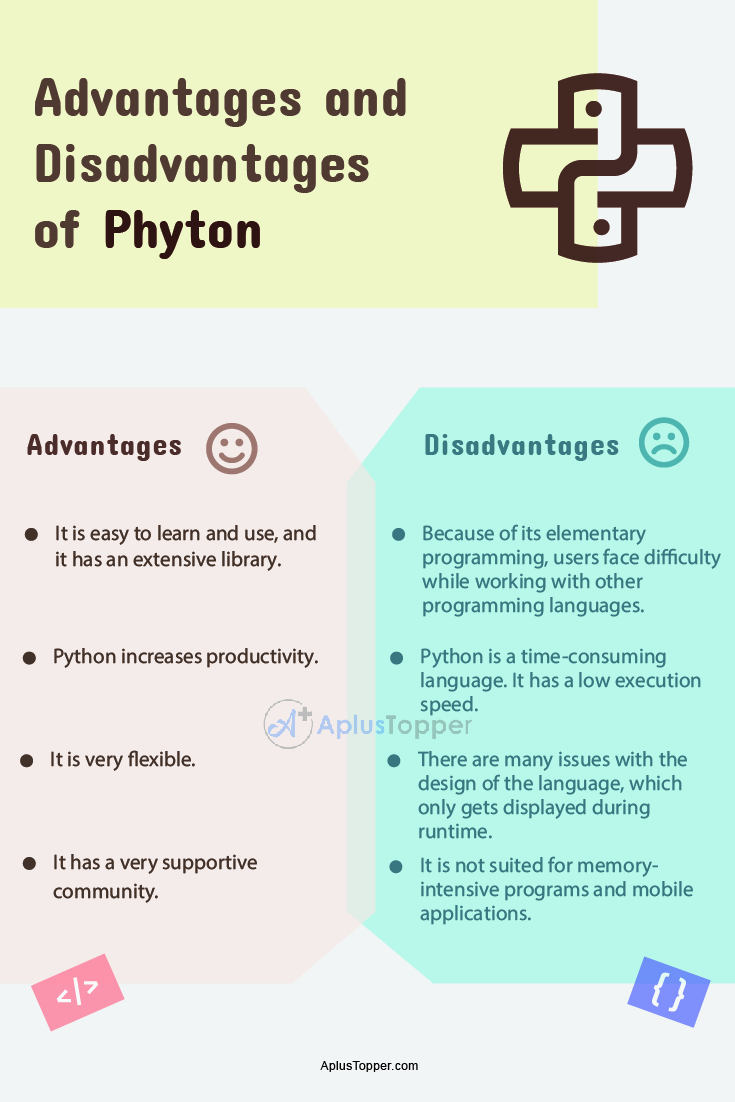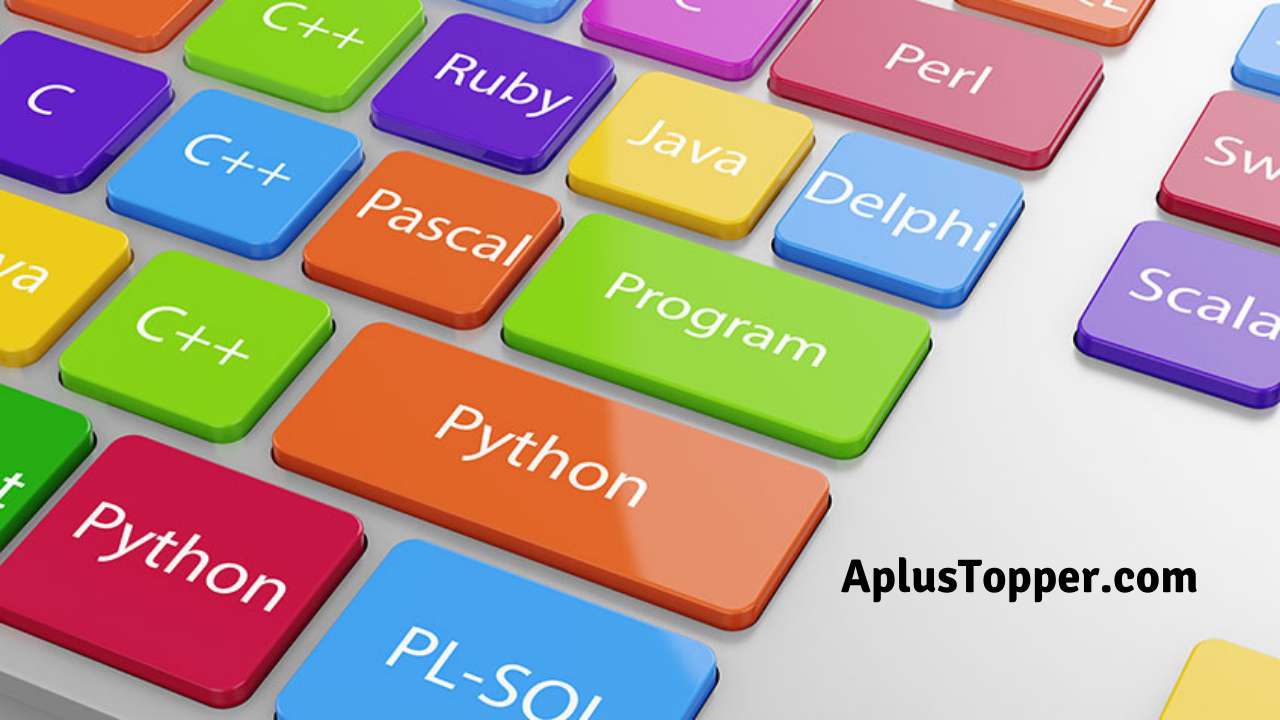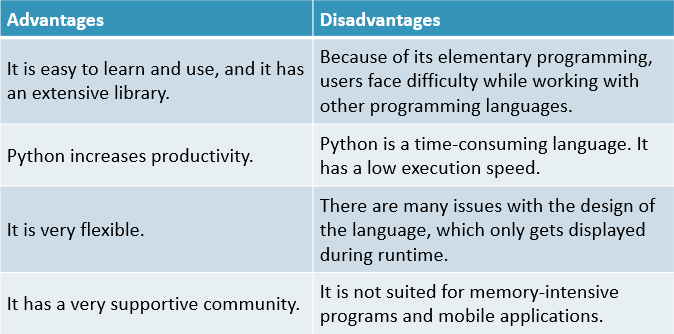Advantages and Disadvantages of Python: The primary thing that comes to one’s mind after hearing the name Python is a giant snake. But in this article, we will not be talking about the snake; instead, we will be talking about the Python programming language. Python is one of the most mention-worthy programming languages in today’s world. It ranks among the fastest-growing programming language in the world. It is versatile, flexible, extremely effective, easy to use and develop. It has a very active community as well. This means that the best minds in the field will provide enough support to adopt this new language. It is used in numerous organizations due to its multiple programming paradigm support and its performance of automatic memory management. Due to its comprehensive standard library, Python is also often referred to as a battery-included language.
- Advantages of Python
- Disadvantages of Python
- Comparison Table for Advantages and Disadvantages of Python
- FAQs on Pros and Cons of Python
What is Python? Advantages and Disadvantages of Python 2022
Python is a general-purpose, interpreted, high-level dynamic programming language. Its design structure focuses on code readability along with its meaningful use of significant indentation.
Compared to Java and C, fewer steps are required for the Python programming language. The construction of its language and its aim of object intended approach helps the programmers write logical and clear codes for small-scale and large-scale projects.
Guido Van Rossum created Python, and it was first released on 20th February in the year 1991. The language came from an old comedy sketch series known as Monty Python’s flying circus, which used to air on BBC television.
In the year 1999, Guido Van Rossum explained his aims for Python. They were:
- Python should be appropriate for regular day-to-day activities. It should also allow less development time.
- It should be a code that is easy to understand. It should be as simple and as plain as the English language.
- Python should have an open source so that everyone can contribute to developing the program

Advantages of Python
- Easy to use and learn: For beginners, Python is straightforward to use. It is a high-level programming language, and its syntax is like the English language. These reasons make the language easy to learn and adapt to. Compared to Java and C, in Python, the same task can be performed using fewer lines of code. As a result of its easy learning, the principles in Python can be executed faster compared to other languages.
- Increased productivity: Python is a very productive language. The simple nature of Python helps the developers to concentrate on solving the issues in it. To understand the syntax and behavior of the programming language, the users do not have to spend hours, so more work is done.
- Flexibility: This language is very flexible, and hence it allows the user to try new things. The users can develop new sorts of the application using Python programming language. The language does not restrict the user from trying something different. Other programming languages do not provide this type of flexibility and freedom, and hence Python is more preferred in these matters.
- Extensive library: Python provides the user with a vast library. Python’s standard library is massive, and just about every function one needs to perform is available in its library. This is because it has a hugely supportive community and corporate sponsorship. External libraries are not used by users while working with Python.
- Supportive community: The Python language was created years ago, and hence it has a mature community that can support every type of developer, starting from beginners’ level to expert level. There are enough guides, tutorials, and documentation available on the Python programming language, which helps the developers to understand the language faster and better. Because of its supportive community, Python has rapid growth compared to other languages.

Disadvantages of Python
- Speed: Compared to Java or C, the rate of Python is slower. Python is an interpreted language that is dynamically typed. For the execution of a code, each line of the code needs to be explicitly ordered since the language gets interpreted. This is time-consuming, and hence it slows down the process of execution. The dynamic structure of Python also slows its speed because while executing the code, the excess work also needs to be completed. Therefore, in cases where fast acceleration is required, Python is not used there very commonly.
- Memory consumption: Python has a very high memory consumption. This is because it is flexible to the data types. It uses large amounts of memory. Python is not a good choice for tasks where the user wants to optimize memory, i.e., a memory-intensive language.
- Mobile development: Python is strong in server platforms and desktops, and hence it is a fantastic server-side programming language. But it is not appropriate for mobile development. For mobile development, Python is a fragile language. Since it is not memory efficient and has a prolonged power for processing, due to these reasons, Python does not have many built-in mobile applications. Carbonnelle is a built-in application present in Python.
- Database access: Python provides easy programming. However, when it interacts with the database, some issues arise. Compared to technologies like JDBC and ODBC, which are pretty famous, the database access layer of the Python programming language is primitive and underdeveloped. Large enterprises that usually need smooth interaction with complex legacy data do not prefer the usage of Python.
- Runtime errors: The users of Python mentioned various issues they faced with the language design. Since the language of Python is dynamically typed, there can be changes in the data type of a variable at any time. Therefore, it needs to be tested more often, and also, there are errors in the language displayed during runtime.
- Simplicity: Python is a straightforward and easy-to-use programming language which is also a disadvantage of the language. The users of Python get so accustomed to its easy syntax and extensive library feature that they face issues while learning other programming languages. Some users also feel that the Java codes are unnecessary due to their complexity. Therefore, Python has a very vulnerable nature, and the users start taking everything lightly.
Comparison Table for Advantages and Disadvantages of Python
| Advantages | Disadvantages |
| It is easy to learn and use, and it has an extensive library. | Because of its elementary programming, users face difficulty while working with other programming languages. |
| Python increases productivity. | Python is a time-consuming language. It has a low execution speed. |
| It is very flexible. | There are many issues with the design of the language, which only gets displayed during runtime. |
| It has a very supportive community. | It is not suited for memory-intensive programs and mobile applications. |

FAQ’s on Pros and Cons of Python
Question 1.
Which version of Python should I use? Version 2 or 3?
Answer:
The most popular choice is Python 3 since the Python Software Foundation does not support Python 2. Python 3 was primarily introduced in December, in the year 2008, for rectifying the fundamental flaws in design in Python 2. Therefore, it is better to use Python 3 since there is no need to learn Python 2.
Question 2.
What are some of the best Python IDEs?
Answer:
An ideal IDE for the Python programming language comprises essential characteristics like saving and reloading code files, debugging, highlighting syntax, and automatic code for formatting.
Some of the general IDEs which have Python support:
- Sublime Text
- Atom
- Eclipse + PyDev
Some of the best Python-specific IDEs are:
- PyCharm
- Thonny
- Spyder
There are more, but these are a few of the best ones.
Question 3.
Can Python libraries be used in coding interviews?
Answer:
Absolutely. It is good to use Python libraries for coding interviews since it shows how familiar you are with the standard library. Redrafting stuff that is already mentioned in the standard Python library is a mistake.
